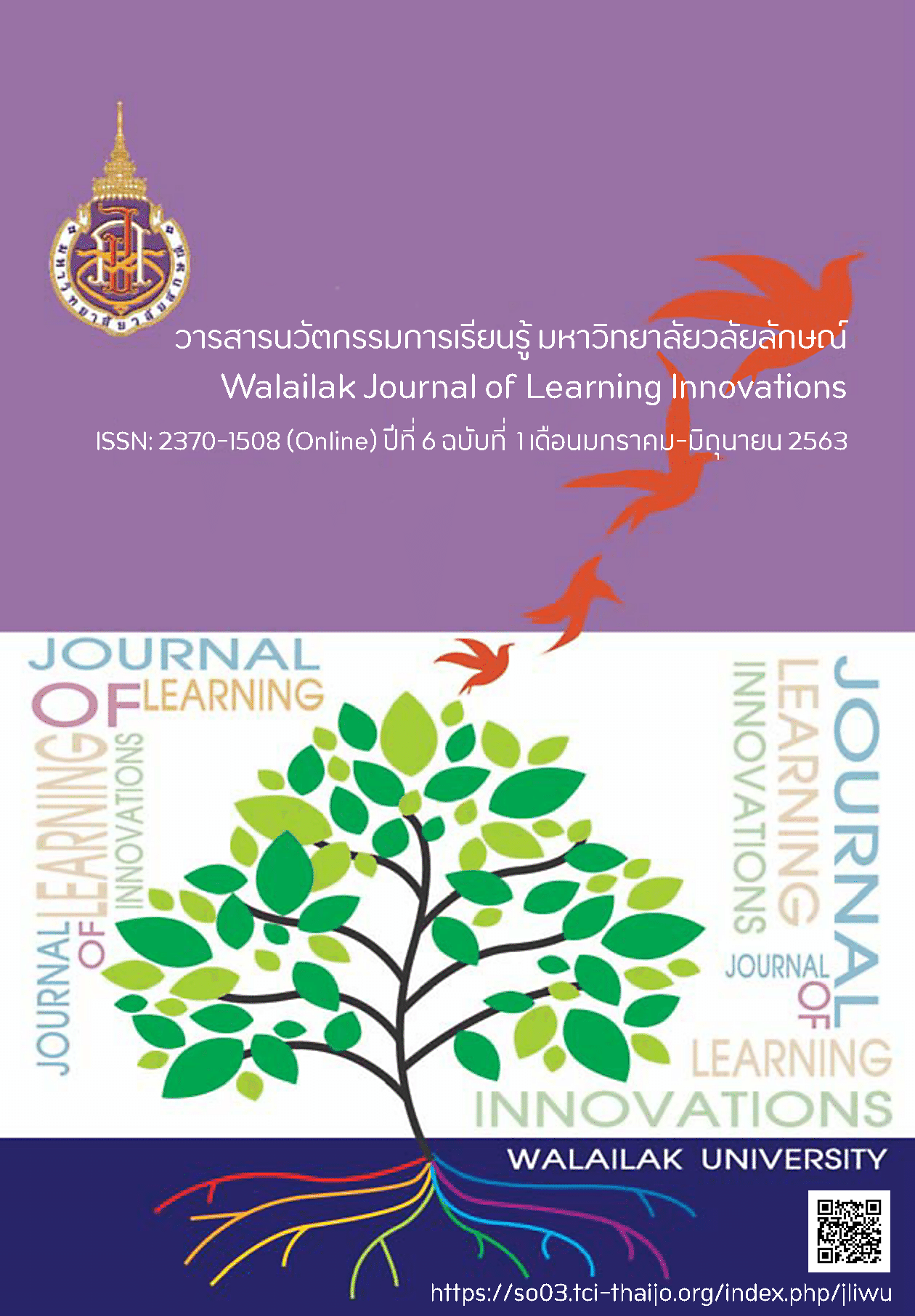Designing of Learning Media to Develop Skills in the Art and Design through Universal Design for Learning (UDL) for Learners of All
DOI:
https://doi.org/10.14456/jli.2020.4Keywords:
Learning Media Kit, Art and Design, Universal Design for Learning (UDL)Abstract
The study aimed to investigate the creative thinking process and Universal Design for Learning (UDL) as information for designing a learning media kit to develop the creative thinking skill on art and design for learners in all ages and then compared the effectiveness of creative thinking works between those who received the learning media kit and those who received the creative experience management in normal situations.
The study was conducted in total 3 steps as follows: Step 1 – Preparation, the author investigated 2 following issues, namely creative thinking process information and UDL concept, and product design information by collecting the basic needs information from 60 key informants and using the results in Step 2 - The Design of Learning Media Kit and Analysis of The Product Design Specification (PDS) with 3 main issues consisting of the elements of product design details, creative thinking and UDL; and Step 3 - Trial the Learning Media Kit to compare the effectiveness of creative thinking works between 64 samples who received the learning media kit (A) by Stratified Sampling Method and 68 samples who received normal experience management (B). It was found that those who received the learning media kit (A) and those who received the normal experience management (B) were significantly different creative thinking evaluation score at 0.05 which is in accordance with the hypothesis.
The total self-assessment scores of creative thinking level of those who received the learning media kit (A) was at a very good level ( = 4.77, SD = 0.44) and those who received the experience management in normal situations (B) had total average score at a good level (
= 3.93, SD = 0.84) and total average satisfaction level towards learning media kit in all aspects was at a very good level (
= 4.88, SD = 0.39).
References
Anantakūn, A. (2017). Social Elderly Challenges of Thai society. Bangkok: The Royal Institute's Office.
Bengamin S Bloom. (1968). Learning for Mastery. New York: UCLA Evaluation Comment 1(2).
Deelers, S. (2015, May-August). Creative Thinking Development Process in the Creative Higher Education Institute. Veridian E-Journa, 8(2), 1341-1360.
Pāpatthā, C., & Čhīrangsuwan, N. (2014, September ). Essential Elements for Learning Environment of Creative Education on Social Network to Develop Creative Thinking. RMUTP Research Journal, 8(2), 56-69.
Yuktirat, C. (2016). Research and Development in Product Design. Bangkok: SUAN SUNANDHA RAJABHAT UNIVERSITY.
Yuktirat, C. (2016). Study about Relationship Between Skill of Quick Sketching and Creativity in Design. Japan: Academic Fora. 26-27.
Yuktirat, C. (2017). Conceptual in Design. Bangkok: SUAN SUNANDHA RAJABHAT UNIVERSITY.
Milton, A., & Rodgers, P. (2013). Research Merhods for Product Design. China: Laurence King Publishing Ltd.
Ralabate, P. Reading Rocket. [Online] ; August 30, 2011. Avaiable :http://www.readingrockets.org/article/universal-design-learning-meeting-needs-all-students (Access date : August 2019)
Rose, D.H., and Meyer, A. (2002). Teaching Every Student in the Digital Age: Universal Design for Learning. Alexandria, VA: ASCD.
Downloads
Published
How to Cite
Issue
Section
License
เนื้อหาและข้อมูลในบทความที่ลงตีพิมพ์ในวารสารนวัตกรรมการเรียนรู้ มหาวิทยาลัยวลัยลักษณ์ ถือเป็นข้อคิดเห็นและความรับผิดชอบของผู้เขียนบทความโดยตรง ซึ่งกองบรรณาธิการวารสาร ไม่จำเป็นต้องเห็นด้วย หรือร่วมรับผิดชอบใดๆ
บทความ ข้อมูล เนื้อหา รูปภาพ ฯลฯ ที่ได้รับการตีพิมพ์ในวารสารนวัตกรรมการเรียนรู้ มหาวิทยาลัยวลัยลักษณ์ ถือเป็นลิขสิทธิ์ของวารสารนวัตกรรมการเรียนรุ้ มหาวิทยาลัยวลัยลักษณ์ หากบุคคลหรือหน่วยงานใดต้องการนำทั้งหมดหรือส่วนหนึ่งส่วนใดไปเผยแพร่ต่อเพื่อกระทำการใดๆ จ้อต้องได้รับอนุญาตเป็นลายลักษณ์อักษรจากวารสารนวัตกรรมการเรียนรู้ มหาวิทยาลัยวลัยลักษณ์ก่อนเท่านั้น


